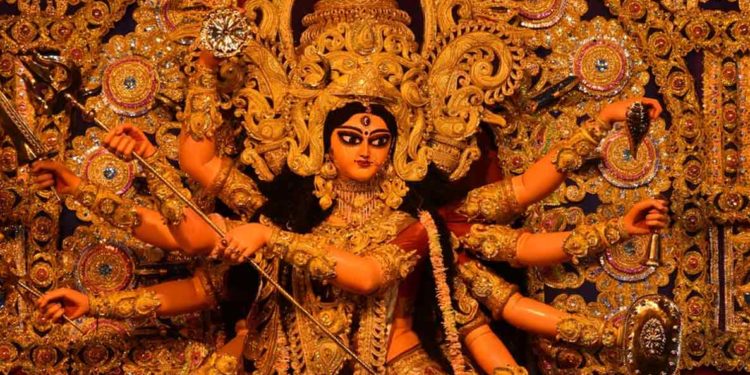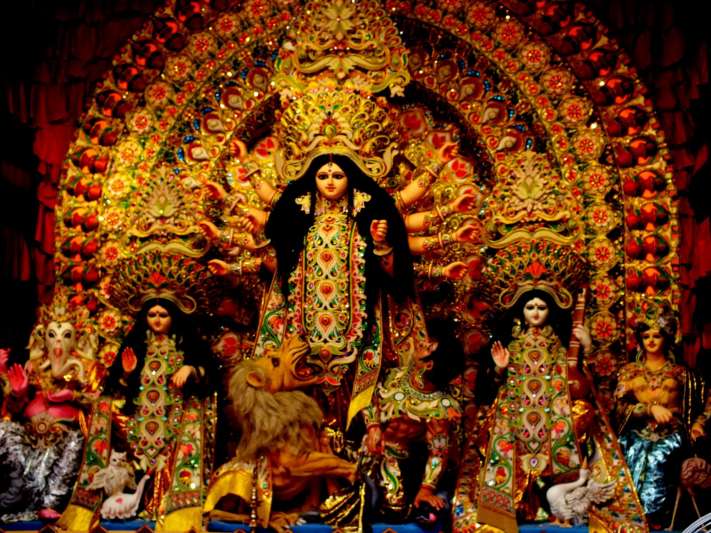Navratri, or Dussehra, is one of the most colourful festivals of India. Hindu families get together and spend time performing auspicious acts to seek Goddess Durga’s blessings. Apart from worshipping the deity, the festive season also includes playing dandiya, making special Navratri foods, engaging in divine satsangs, and observing fasts. The most special factor is that each of the nine days has an ascribed colour that is followed. India being a diverse country, different states celebrate the festival differently, depicting the diverse forms of culture and traditions. With an avatar of Goddess Durga worshipped generally, this Navratri 2021, here are the nine colours dedicated to the nine forms.
Day 1: Yellow
The first day of Navratri is dedicated to Goddess Shailputri – the daughter of the mountains. She is also known as Goddess Parvati or Hemavati. The colour associated with this day is yellow. It is said to bring happiness and brightness. Devotees offer pure ghee to the deity to bless them life free of diseases and illness.
Day 2: Green
The second day of Navratri is dedicated to Goddess Brahmacharini – in reference to the unmarried Parvati. She is also known as Tapasyacharini. The colour associated with this day is green. It brings growth, harmony and new beginnings.
Day 3: Grey
The third day of Navratri is dedicated to Goddess Chandraghanta – the fierce 10-armed avatar, roaring in anger. The colour associated with this day is grey. While this colour signifies negativity, it symbolises zeal and determination to destroy evil.
Day 4: Orange
The fourth day is dedicated to Goddess Kushmanda – energy that created the universe. Devotees usually fast on this day to please the deity. The colour associated with the day is orange that represents brightness, happiness, tranquillity and positive energy.
Day 5: White
The fifth day is dedicated to Goddess Skandamata – mother of Skanda. She is also referred to as Goddess Karthikeya. The colour associated with this day is white. It represents purity, peace, meditation, serenity and calmness. Devotees clad in white attire on this day.
Day 6: Red
The sixth day is dedicated to Goddess Katyayini – a form of Shakti. She is referred to as the warrior-goddess or Bhadrakali. Being the fiercest form of Goddess Durga, this day is associated with the colour red. Both beauty and fearlessness towards enemies are associated with this colour.
Day 7: Royal Blue
The seventh day is dedicated to Goddess Kalaratiri – the four-armed deity that rides a donkey. She is dark and ferocious in appearance. The colour associated with the day is power and divine energy.
Day 8: Pink
The eighth day is dedicated to Goddess Mahagauri – the mitigator of all sins. This avatar of the Goddess is known to fulfil the desires of the devotees. The colour associated with the day is pink which represents hope, self-refinement and upliftment.
Day 9: Purple
The ninth, and last, day of Navratri is dedicated to Goddess Siddhidatri – the bestower of knowledge and wisdom. On this day, students offer books to help them achieve their aspirations. The colour associated with the day is purple which represents ambition and power.
Wishing this Navratri 2021, all of please Goddess Durga by following the nine colours. Happy Dussehra.









Discussion about this post